Underwater Scooters: Dive into Adventure with the Ultimate Guide
Imagine gliding effortlessly beneath the waves, your arms raised in a streamlined freestyle position as a powerful device pulls you through clear blue water.
You can achieve this excitement on your next beach trip or snorkeling excursion by using a high-quality underwater scooter. For water sports enthusiasts, travelers and families planning a seaside vacation, an underwater scooter transforms every swim into an adventure.
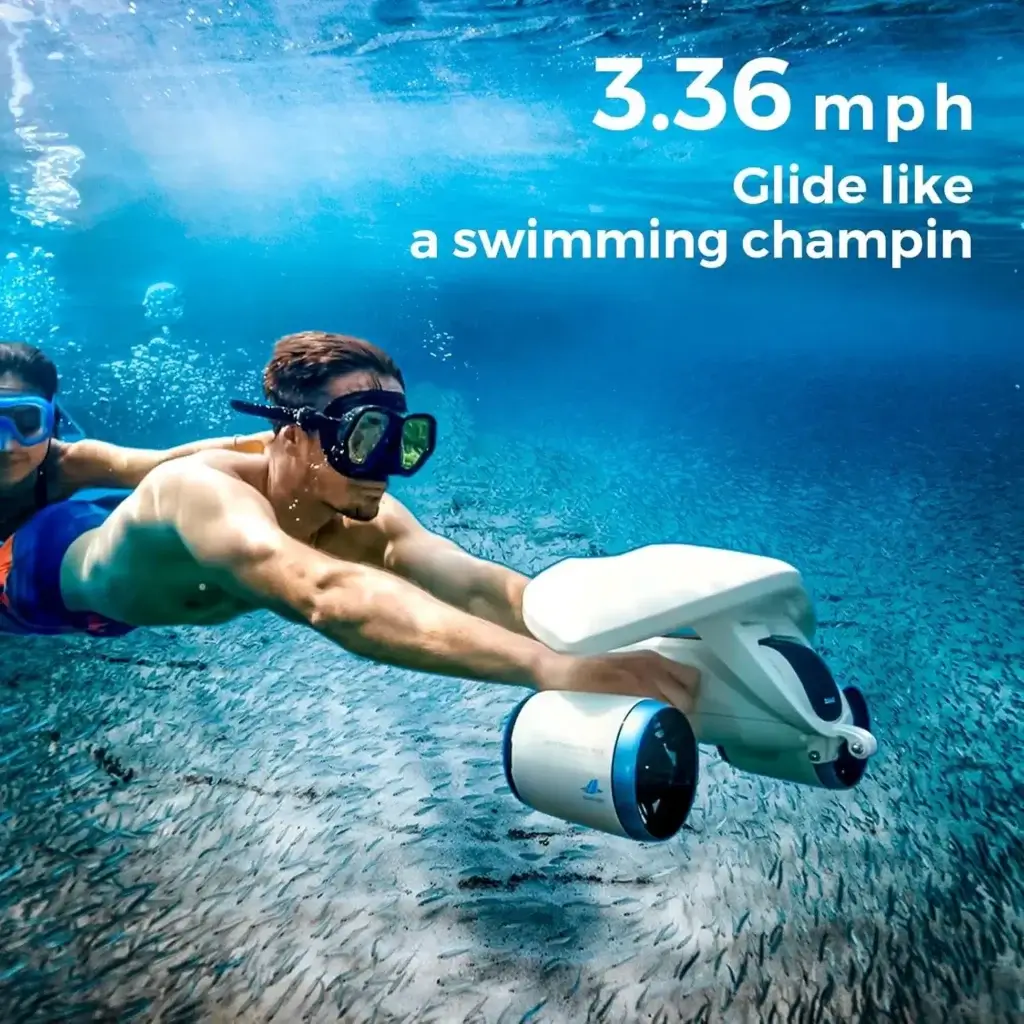
This comprehensive guide explains what underwater scooters are, how they work, and why they make exploring the ocean so exhilarating. We’ll cover key features and safety, list the benefits of owning one, compare top models (including the Sublue Mix), and walk you through buying tips, maintenance advice and more. By the end, you’ll have everything you need to confidently pick and use the perfect underwater scooter for your next dive.
Mix Pro Underwater Scooter with Smartphone/Action Camera Mount Low Battery Alarm 2 Gear Speed 60 Minutes 24lbf 131ft Dual Motors Swimming Pool Diving Snorkeling Water Scooter for Kids Adults
What Are Underwater Scooters?
An underwater scooter (also called a diver propulsion vehicle, underwater propulsion vehicle or sea scooter) is a motorized device that helps divers and swimmers move through water with minimal effort. Essentially, it’s a sealed, battery-powered unit with a propeller: you simply grab the handles and throttle, and the scooter pulls you forward, so you can cruise underwater like “Aquaman”. By generating its own thrust, an underwater scooter lets you swim faster and farther than you could by kicking alone.
These scooters were originally developed for military scuba teams, but have become popular for recreational use. They’re used by snorkelers, free divers and scuba divers who want to zip around reefs, swim through kelp forests or descend along a wreck without exhausting all their air supply. Some models are very lightweight and compact (fit in a backpack), while others are larger sled-like devices. Either way, the result is the same: they greatly extend your range underwater by conserving your energy and air.
How Underwater Scooters Work
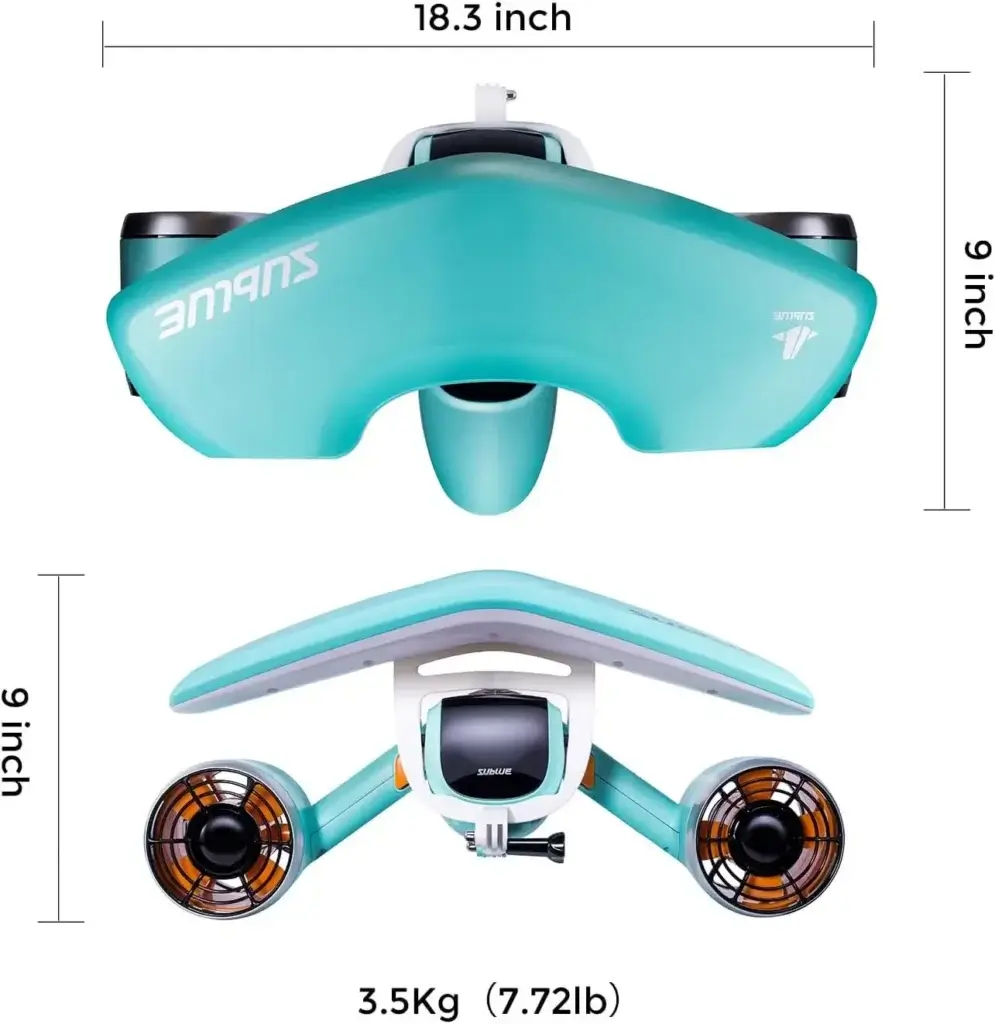
Key Components
Underwater scooters have a simple but robust design focused on safe propulsion. Key parts include:
- Watertight housing (case): A sealed, pressure-proof outer shell keeps water out of the motor and battery.
- Electric motor: A compact brushless or similar motor inside drives the unit.
- Rechargeable battery: Provides the power (typically lithium-ion). Many scooters use a 10,000+ mAh battery for 30+ minutes of runtime.
- Propeller(s): One or more propellers (thrust screws) attached to the motor push water backward, pulling you forward. These are enclosed by guards for safety.
- Handles and controls: Hand grips with a throttle (trigger or switch) let you control speed. Most units have at least two speed settings and an on/off switch; high-end models may also include speed gauges or even a small display. Many scooters include a built-in mount for an action camera.
When you squeeze the throttle, the motor spins the propeller, creating thrust. This pushes water backwards and propels the scooter (and you) forward. The scooter’s body is designed to be streamlined so it cuts through water efficiently. Many newer models also feature neutral or positive buoyancy so they don’t sink like a rock if you let go. (Some come with an inflatable “float” ball that adds positive buoyancy, helping the scooter surface if dropped.)
Safety Features
Modern underwater scooters are built with diver safety in mind. Common safety features include:
- Propeller guards: Grills or shrouds surround the blades to prevent fingers, cords or marine life from getting caught.
- Buoyancy control: Many scooters float at the surface (or come with a float attachment) so they don’t sink out of reach if released.
- Kill switch / auto-stop: Most have an emergency shut-off – for example, a quick-release lanyard lets you instantly drop the scooter, and depth sensors automatically cut power if you go beyond the scooter’s rated depth.
- Water detectors: Some high-end scooters have sensors that detect flooding; if the unit starts leaking, the motor shuts off to protect the electronics.
- Emergency release: Quick-release latches or grips enable you to let go immediately and swim free if needed.
Thanks to these safeguards, underwater scooters are quite safe when used properly. The manufacturers design them so the propellers can’t accidentally run wild or injure the diver or the environment. However, always inspect your scooter before use, attach the safety lanyard, and stay aware of your surroundings to avoid collisions.
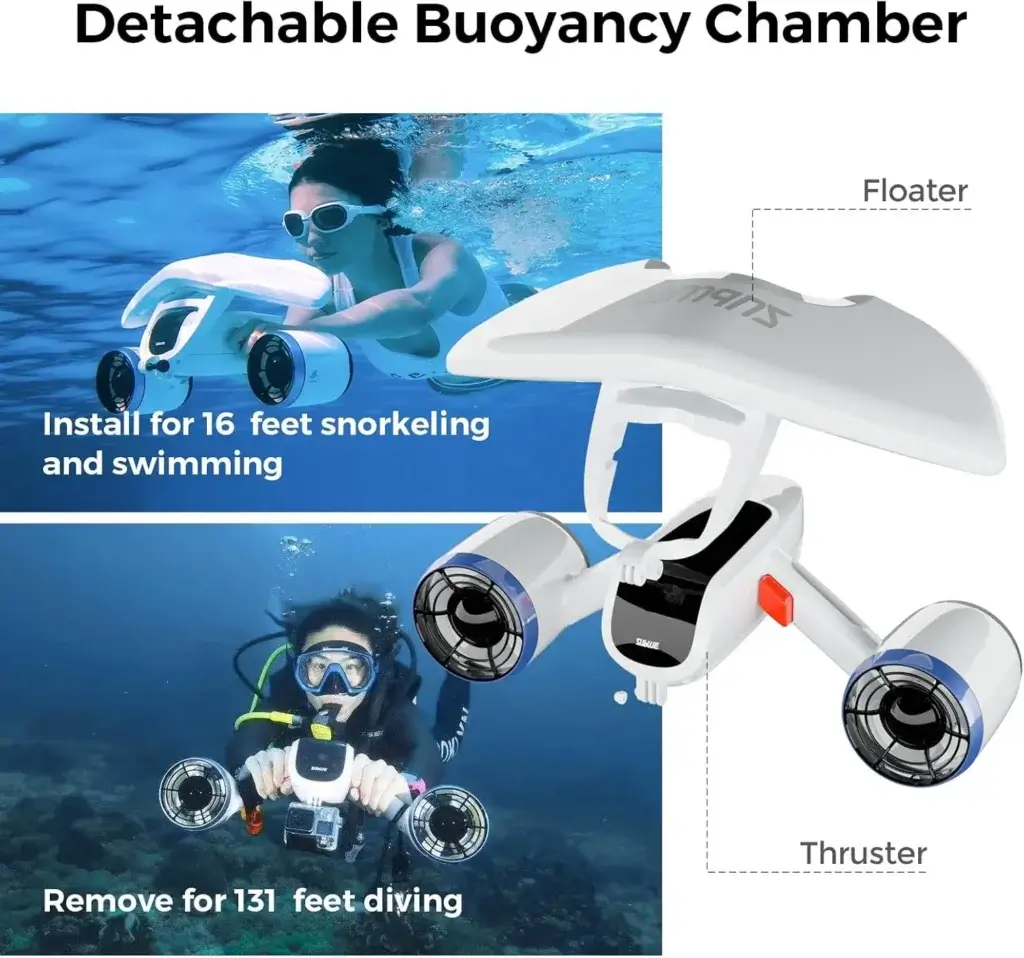
Benefits of Underwater Scooters
Underwater scooters offer a host of advantages that make your time in the water more fun, productive and safe. Key benefits include:
- Extended Dive Time: Because the scooter provides propulsion, you exert much less effort swimming. You breathe more slowly and efficiently, conserving air or oxygen. Many divers report staying underwater up to 30% longer with a scooter. More bottom time means you can explore reefs and wrecks in greater depth and detail.
- Faster Speed & Range: Most swimming swimmers average ~1 mph. With an underwater scooter, you can reach 3–4 mph (and even faster on high-end dual-propeller models), allowing you to cover much more ground on each dive. Distant dive sites that used to require long finning swims become easily reachable.
- Access Hidden Spots: Scooters let you swim against currents or drift safely, so you can explore underwater caves, wrecks or walls that were once too far or too challenging to reach. For example, you can glide into large sea caves or quickly zip out of strong rip currents. Photographers especially love this – they can chase schools of fish or follow turtles without disturbing them, since the scooter makes minimal noise.
- Less Fatigue: By doing most of the work, scooters reduce muscle tiredness. You won’t feel leg-burning kicks at the end of a dive. This is especially great for beginners or older swimmers – they allow anyone to have a full dive without overexertion.
- Safety Backup: In emergency situations like a sudden current or wave, a scooter can pull you to the safety of shore or boat much more quickly than swimming alone. If a dive buddy lags behind, you can easily slow down. In poor visibility, staying together is easier when everyone can move at the same pace. In short, a scooter gives you more control over your movement in unpredictable conditions.
- Family-Friendly Fun: Many scooters are so user-friendly that children, teens and adults all love them. As one user raved, “Loved this so much we had to buy a 2nd one. Everyone, children and adults alike, love to ride this.”. Models like the Sea-Doo Dolphin were designed for pools and shallow snorkeling so even non-swimmers or kids as young as 8 can use them under supervision. They turn ordinary pool time into an underwater joyride.
- Learning & Skill Building: Riding a scooter is an exciting challenge – it teaches you new buoyancy control and navigation skills. You learn to finesse turns and speeds, which can even improve your general diving ability. Plus, the thrill of zooming around makes each dive feel fresh and fun – so you’ll want to dive more often.
In summary, underwater scooters make diving and snorkeling more engaging and efficient. You’ll explore more reef, get closer to marine life, and have a blast doing it. Whether you’re an adventurous traveler, a scuba lover or a family planning a tropical getaway, a scooter can turn your next swim into an unforgettable adventure.
Top Underwater Scooter Models (Comparison Table)
For comparison, here’s a table summarizing key specs of several popular underwater scooters, including the Sublue Mix (affiliate link below):
| Model | Top Speed | Battery/Run Time | Max Depth | Weight | Price (approx.) |
|---|---|---|---|---|---|
| Sublue Mix | 1.5 m/s (3.4 mph) | ~30–40 min | 40 m (131 ft) | 3.5 kg (7.7 lb) | ~$499 (sale ~$449) |
| LEFEET S1 PRO | 1.8 m/s (4 mph) single; 2.3 m/s (5.2 mph) dual | 35–70 min | 40 m (131 ft) | 5.5 lb (2.5 kg) | ~$699 (single jet) |
| Yamaha RDS300 | ~1.3 m/s (3 mph) | ~90 min (normal use) | 30 m (100 ft) | ~9 kg (20 lb) | ~$999 |
| Sea-Doo Dolphin | ~0.9 m/s (2 mph) | ~90 min | 5 m (15 ft) | 5.4 kg (12 lb) | ~$299 |
(Specs from manufacturer sites and reviews.)
Each model targets different users: the Sublue Mix is ultralight and portable, ideal for travel and casual dives; the Lefeet S1 PRO offers modular mounting and hands-free modes (for advanced users); Yamaha’s RDS300 is a rugged dive scooter with very long run time; while the Sea-Doo Dolphin is an entry-level pool/lake scooter for families. Use this table to match features to your needs, then read on for a full review of the Sublue Mix and tips on choosing the best scooter for you.
Sublue Mix Underwater Scooter – In-Depth Review
One standout budget-friendly model is the Sublue Mix (sometimes called the WhiteShark Mix). It packs dual propellers into a compact design, and it’s worth considering if you want a versatile, camera-ready scooter.
- Key Specs: The Mix reaches about 3.4 mph (1.5 m/s), with a battery runtime of roughly 30–40 minutes on full power. It’s rated to dive as deep as 40 meters (though most users stay shallower). With its battery inserted, the unit weighs only about 3.5 kg (7.7 lb), making it very travel-friendly. It also comes with a float attachment for buoyancy (so it will surface if released) and an action-camera mount on top.
- What We Like (Pros): The Mix is remarkably light and portable, fitting inside a duffel bag and even airline-approved as checked baggage. Its dual brushless motors provide strong thrust (8 kgf each), so even a heavy adult can be pulled along easily. Users report it feels very nimble and user-friendly in the water – beginners can pick it up quickly. Battery life is decent for its size; some owners say it easily got them through multiple pool sessions on one charge. It also floats on the surface (after dropping the float), making it safe and easy to retrieve.
- Drawbacks (Cons): Like any compact scooter, the Mix has moderate battery life. Some power-users wish for longer run time on deep dives (the typical 30–40 min runs can be limiting on very long dives). Its top speed (3.4 mph) is not as high as some premium models, but it still feels very quick compared to fin-swimming. A few users have mentioned small issues like the plastic release latch breaking (Sublue’s support promptly replaced any broken part, according to customer feedback). Overall, it’s a great performer for casual to intermediate snorkeling and diving, but not meant for hardcore tech divers.
- Ideal Scenarios: The Sublue Mix shines for beach vacations, snorkeling trips and pool fun. It’s excellent for exploring coral reefs, shipwrecks or underwater parks on vacation because you can cover more area in less time. Families love it as a pool toy – adults and kids alike can have fun cruising around . Its small size makes it perfect for travelers: toss it in luggage and take it on a Caribbean getaway or tropical cruise. Just remember to keep the battery charged and follow safety rules, and the Mix will add a thrilling new dimension to your aquatic adventures.
- Availability: The Mix is widely available through online retailers. You can find it on Amazon (for example, buy the Sublue Mix here – affiliate link), or directly from Sublue’s official store. It often goes on sale for under $500, and there are bundle options (extra battery, etc.) at some shops. Replacement parts (propellers, battery, float) are also available via Sublue’s service network.
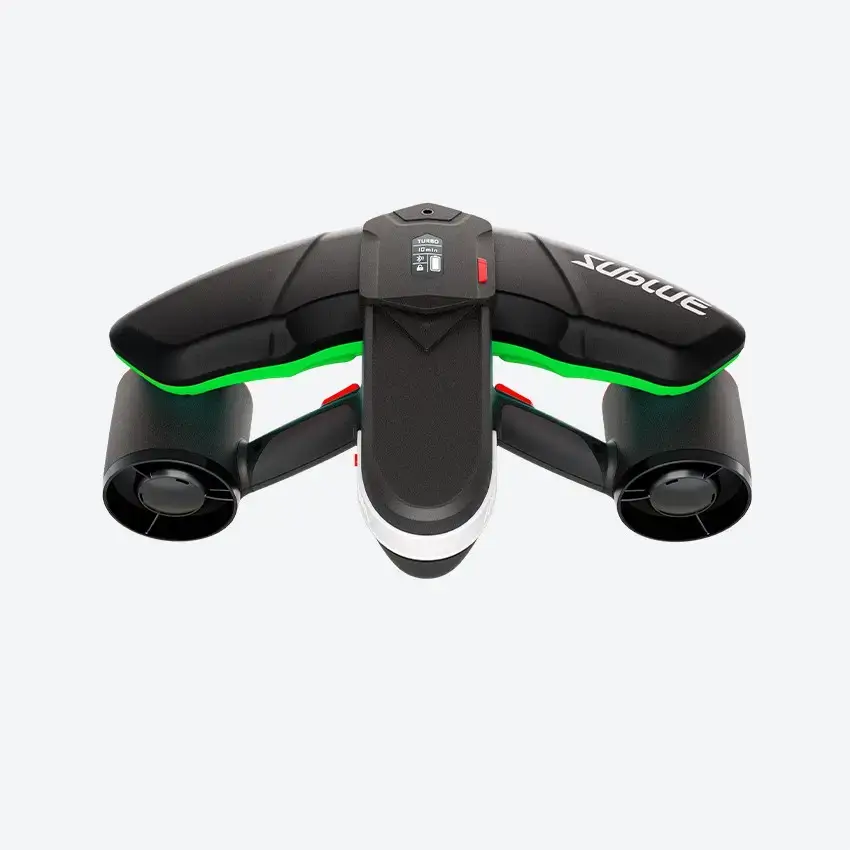
Underwater Scooter Buying Guide
Shopping for your first underwater scooter? Use this checklist to make sure you get the right one:
- Speed and Power: Look for a scooter that reaches at least 3–4 mph (1.2–1.8 m/s) if you want real thrill. Higher thrust (measured in lbf or kgf) helps you fight currents. Dual-motor scooters usually have more power and can carry two users in tandem.
- Battery Life: Check the runtime per charge. Budget models often give 30–45 minutes on full power, while high-end scooters can run 90+ minutes. Consider models with removable/replaceable batteries if you want to easily swap for extra dive time (keeping spares ready).
- Depth Rating: Make sure the scooter’s rated depth meets your needs. Entry-level scooters (like pool models) might only handle ~15 ft (5 m), while serious dive scooters are rated to 40 m or more. Never exceed the manufacturer’s depth limit.
- Weight & Portability: If you plan to travel, pick a scooter that’s as light and compact as possible. Models under ~4 kg (9 lb) can fit in carry-on luggage (battery size permitting). Heavier models (~10–15 kg) give more power but cost more to ship and handle.
- Buoyancy: Choose a scooter with positive buoyancy or an included float. This ensures the scooter will rise to the surface if you let go. It’s a crucial safety feature – falling to the bottom could make a surface rescue much harder.
- Safety Features: Ensure the scooter has depth-sensor auto-shutoff (so it won’t run off uncontrollably at extreme depths), and propeller guards. A quick-release lanyard or strap is a must; it lets you instantly detach from the device in an emergency. Some modern models also include water leakage alarms.
- Build Quality and Durability: Look for rugged, corrosion-resistant materials (anodized aluminum or strong plastics). Read reviews for reliability. Check the warranty period and what it covers. Many brands allow you to replace worn O-rings and parts.
- Additional Features: Handy extras include onboard battery indicators, multiple speed settings, and action-camera mounts. Some scooters even have LED lights for night diving or display screens. Decide which features are worth the extra cost for your use-case.
- Budget: Scooters range from a few hundred dollars (basic models) up to $2000 for luxury scooters. Decide what fits your budget. Remember to include costs of accessories (extra batteries, chargers) in your total.
- Where to Buy: Compare retailers. Amazon often carries scooters with fast shipping and user reviews, while buying from an official store may include better customer support. (See the Where to Buy section below for a detailed comparison.) Always check that the seller is reputable and that the product is genuine.
Maintenance Tips for Your Underwater Scooter
Keep your underwater scooter in top shape with regular care:
- Pre-Dive Checks: Before each dive, inspect your scooter carefully. Make sure the battery is fully charged and undamaged. Check that the O-rings (seals) are clean and lightly greased. Look over the propellers – if they have any nicks or debris, clear it out or replace them. Test the throttle and safety release on dry land.
- Clean After Use: Saltwater and sand can corrode parts. Immediately after diving, rinse the scooter thoroughly with fresh water. For a deep clean, you can disassemble removable parts (floats, prop covers) and soak them. Wipe off any salt crystals and debris.
- Dry It Out: After rinsing, dry the scooter completely. Use a soft towel and let it air-dry in a ventilated spot. Make sure no water remains in the battery compartment or electrical sections.
- Inspect and Lubricate: As you clean, inspect all components for wear or damage. Check O-rings for cracks and replace if needed. Apply a thin coat of silicone grease to all o-rings and seals every few dives. This maintains the watertight seal.
- Store Properly: Store your scooter and its batteries in a cool, dry place away from direct sunlight. If not using it for a month or more, leave the battery at about 50% charge and recharge periodically (see your manual). Do not store the battery fully depleted or fully charged at low temperature – follow the manufacturer’s guidelines.
- Battery Care: Use only the charger that came with the scooter. Remove the battery before flying or long-term storage. Keep battery contacts clean. Replace the battery if it shows signs of bulging or loses capacity.
By following these simple steps – rinse, dry, check, and lubricate – you’ll keep your scooter running safely for years.
Where to Buy Underwater Scooters
You have several options when purchasing an underwater scooter. Here’s how they compare:
| Retailer/Platform | Pros | Cons |
|---|---|---|
| Amazon | Wide model selection, fast shipping (Prime), user reviews. Often competitive prices and discounts. Convenient returns. | Quality/warranty depends on seller. Some listings are third-party. |
| Official Stores | Guaranteed authentic product with full warranty. Direct support from manufacturer. May offer bundles or promotions. | Prices can be higher and shipping slower. Limited to that brand’s models. |
| Local Dive Shops | Expert advice and demo equipment. Knowledgeable staff can assist. Often carry multiple brands. | Usually higher prices and fewer sales. In-stock models may be limited. |
| Specialty Retailers | Stores like dive supply shops or watersport shops (e.g. Divers Supply) have selection and expertise. | Shipping may take longer; return policy varies. |
For example, Amazon carries almost all major brands. You can find the Sublue Mix on Amazon with quick delivery (see Sublue Mix Underwater Scooter as a starting point). Purchasing directly from the Sublue website or their authorized dealers ensures full support and warranty service. If you’re unsure which model suits you, visiting a dive shop can be helpful – though expect to pay a bit more, you get personalized guidance. Whichever route you choose, check for coupons and bundle deals to maximize your value.
Recommended Accessories
Enhance your underwater scooter experience with these useful add-ons:
- Spare Battery: Carry an extra battery for longer adventures. Many scooters allow quick swaps so you never run out of juice mid-dive.
- Fast Charger or Dual Charger: Speeds up charging time. A dual charger lets you charge two batteries simultaneously (ideal if you have spares).
- Protective Case: A padded travel case or hard-shell case will protect your scooter and accessories during transport or storage.
- Floatation Buoy: If not included, a separate float (surface buoy) can make it easier to track and grab your scooter at the surface.
- Spare Propellers: It’s wise to have an extra set of propellers or blades in case of damage. Often these screw on easily.
- Underwater Mounts: A go-pro or action camera housing/mount helps capture your adventures hands-free while riding the scooter. Some scooters include these; others can use universal mounts.
- Underwater Lights: A waterproof dive light mounted on or near the scooter is great for night dives or murky waters.
- Lanyard or Wrist Strap: Always attach a sturdy wrist or belt leash to the scooter for backup – even if your model has one, a spare is good to have.
- Maintenance Kit: Spare O-rings, silicone grease and cleaning tools (brush, towels) will help you perform routine care.
By stocking up on these accessories, you’ll be well-prepared to fully enjoy and maintain your underwater scooter.
Real-Life Underwater Scooter Reviews & Testimonials
- “Loved this so much we had to buy a 2nd one. Everyone, children and adults alike, love to ride this.” – a Best Buy customer about the Sublue Mix.
- “I am 280lbs and this thing pulled me without issue… The thrust is impressive.” – another user on the Sublue Mix.
Divers and snorkelers frequently describe underwater scooters as “one of the coolest pool toys ever” and note that even children can handle them easily. In multiple user reviews, families mention how much fun grandparents and kids have together, and beginners say they feel confident exploring deeper water since the scooter does much of the work. These real-world experiences echo what we’ve covered: a good underwater scooter delivers powerful performance with surprisingly little learning curve, making underwater exploration accessible to almost anyone.
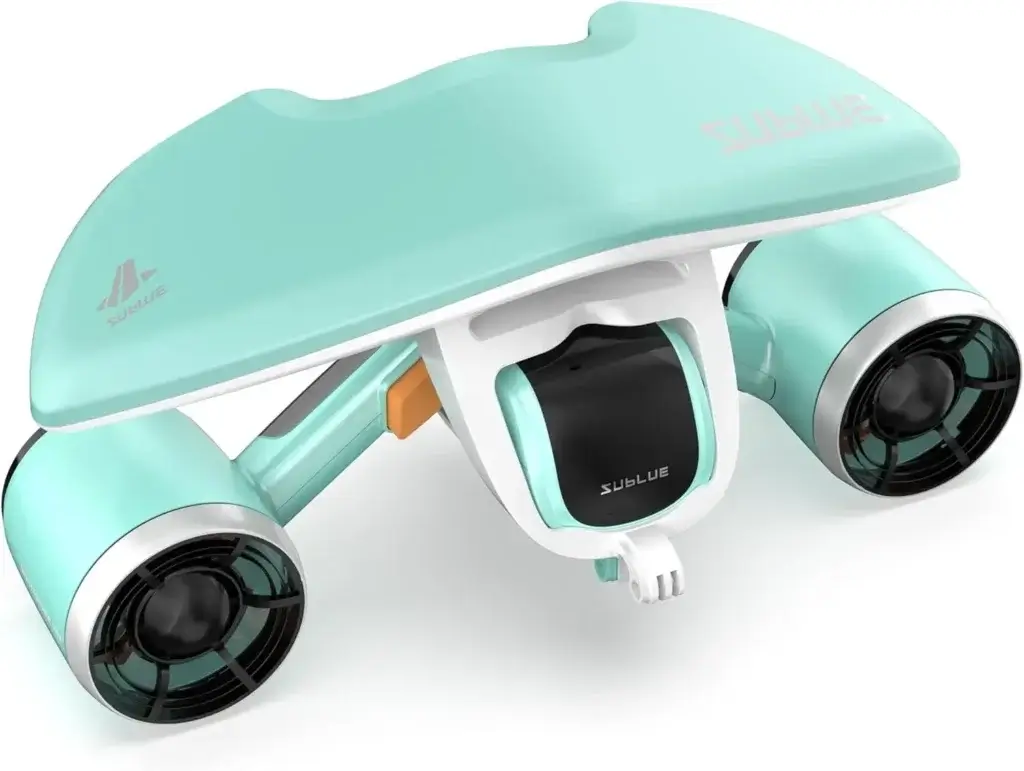
Frequently Asked Questions (FAQ)
Q: What is an underwater scooter, exactly?
A: It’s a battery-powered diver propulsion vehicle (DPV) that pulls a swimmer or diver through water using a small motor and propeller. Think of it as a zip-line underwater – you hold on and glide. It dramatically reduces swimming effort, letting you move faster and use less oxygen.
Q: Are underwater scooters safe to use?
A: Yes, when used responsibly. Modern models are designed with built-in safety features: depth cutoffs, propeller guards, automatic floatation, and quick-release straps. Always check gear before diving, stay within rated depth limits, and never let children dive unsupervised. With proper precautions and practice, scooters are considered very safe – many divers use them for every type of recreational dive.
Q: How fast do underwater scooters go?
A: Typical speeds range from 2 to 4 miles per hour (3–6 kilometers/hour), depending on the model and weight of the diver. For example, the Sublue Mix reaches ~3.4 mph, while high-end dual-prop scooters can exceed 5 mph in short bursts. Even at the lower end, you’ll easily outpace a strong fin kick, allowing you to cover much more area underwater.
Q: How long does the battery last?
A: Battery life varies by model. Entry-level scooters often run 30–45 minutes on a full charge at high speed, whereas some advanced scooters (like the Yamaha RDS300) can run up to 90 minutes. Factors like diver weight, speed setting, and water conditions affect this. Expect average usage times around 30–40 minutes on most compact models. Many manufacturers offer optional spare batteries so you can swap and keep diving longer.
Q: How deep can I go with a scooter?
A: That depends on the scooter’s depth rating. Many recreational scooters are rated for 40 meters (131 ft), which covers almost all recreational diving depths. Pool or snorkel scooters (like the Sea-Doo Dolphin) might only be rated for 5–15 feet. Always check the specified max depth of your model and do not exceed it, because water pressure increases the risk of leaks or structural failure beyond the limit.
Q: Do underwater scooters float if I drop them?
A: Most modern scooters are positively buoyant or come with float attachments so that if you let go, they will surface for easy retrieval. (If a model sinks, an emergency surface float accessory is a must.) Always attach your scooter to yourself with the included lanyard; even so, the floater ensures it won’t drift away.
Q: Can children use underwater scooters?
A: Yes, many are kid-friendly with adult supervision. There are pool-friendly models designed for younger users (ages 8+). The key is choosing a scooter with a gentle speed range and lightweight construction. Always supervise children and ensure they have basic swimming skills. Start in shallow water so they can adapt to the scooter’s pull and controls.
Q: What maintenance is required?
A: Rinse and clean your scooter after every use (see Maintenance Tips above). Check the battery is fully charged before each outing. Inspect O-rings and apply silicone grease regularly. Follow the user manual for specific care instructions. Generally, treat your scooter like any precision equipment: keep it clean, dry, and charged.
Sublue Mix Pro
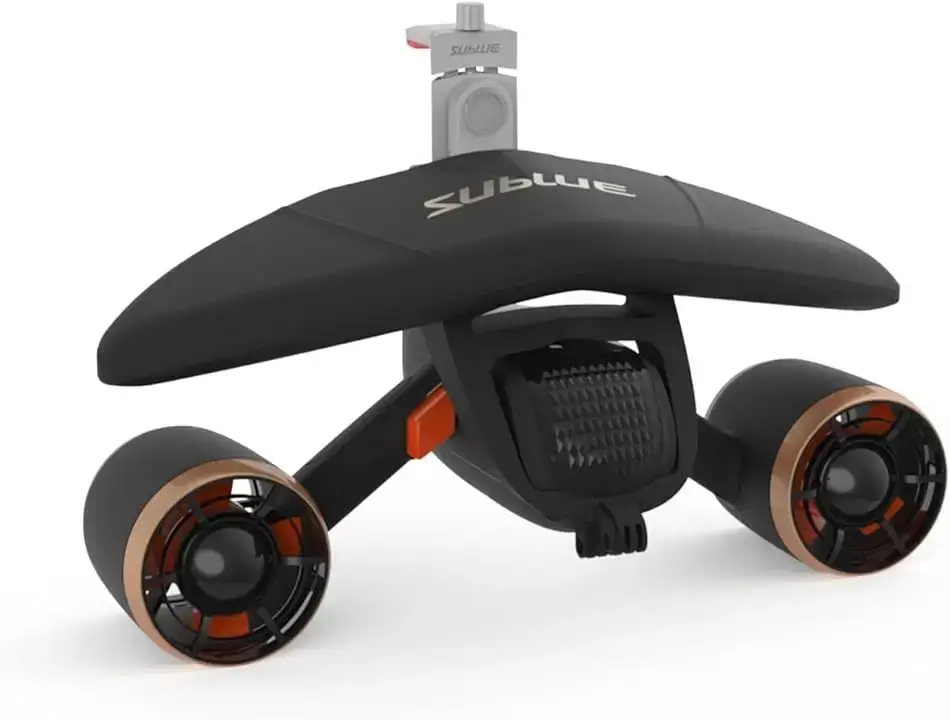
Conclusion
Underwater scooters open up a whole new world of aquatic exploration. Whether you’re an adrenaline-seeking snorkeler, a serious scuba diver or a vacationing family, a quality underwater scooter can transform the way you experience the ocean. You’ll cover more ground, stay underwater longer, and see sights that swimmers without scooters simply miss.
7 Reasons Why the Waydoo Subnado is the Best Underwater Scooter in 2025
Now that you understand how underwater scooters work and what to look for, it’s time to dive in and choose your own. For instance, the Sublue Mix Underwater Scooter offers an ideal blend of portability, power and value – check it out here to see current prices and reviews. Take the plunge: pick the right scooter from our comparisons above, secure the must-have accessories, and get ready to explore the deep with confidence and fun. Your next underwater adventure is only a scooter ride away!
Ultimate Water Scooter Adventure: Ride the Waves on a Personal Watercraft
Table of Contents
What do you think of this post?
There are no reviews yet. Be the first one to write one.




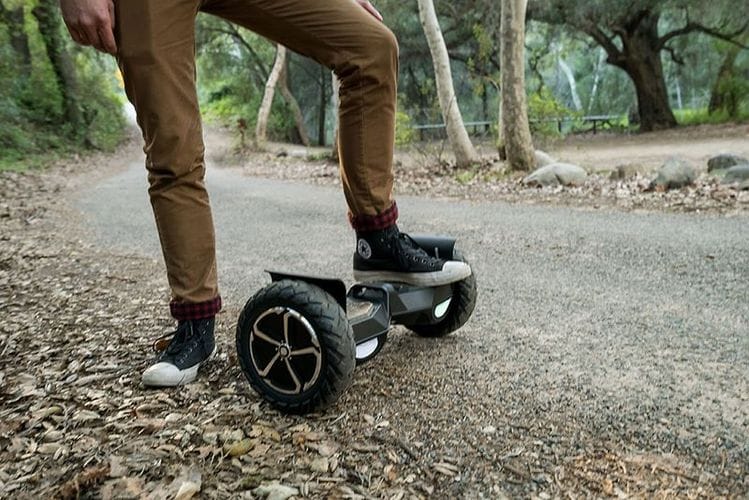
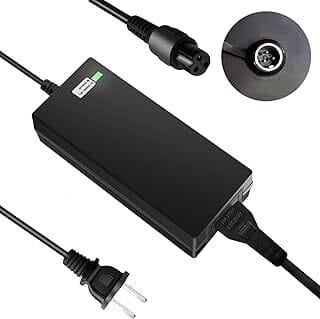
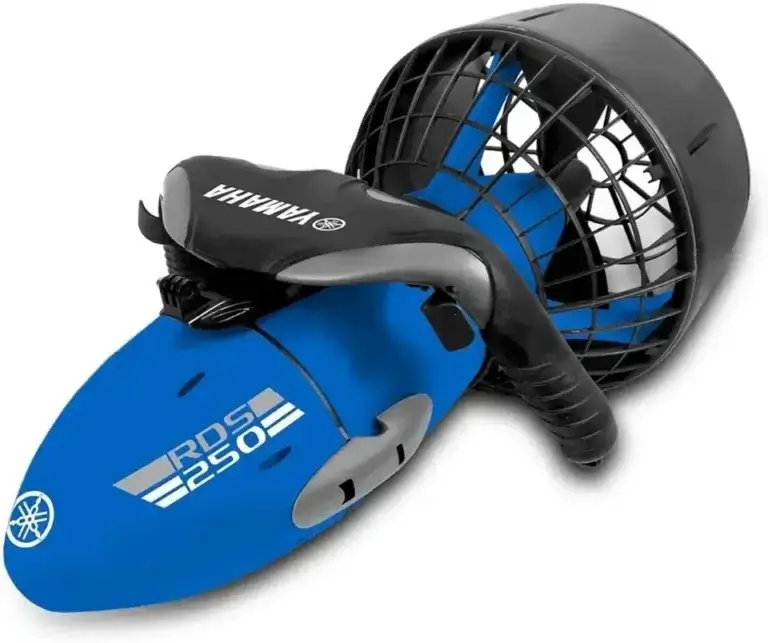

One Comment
Comments are closed.